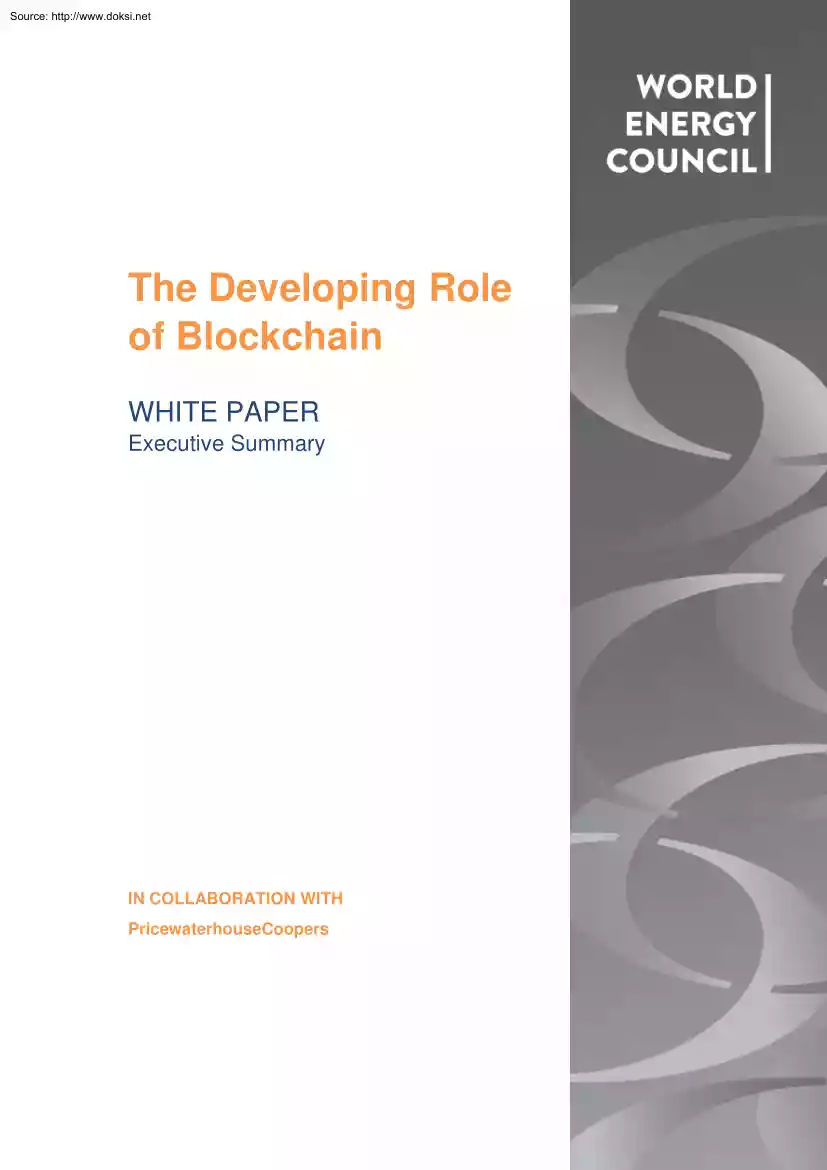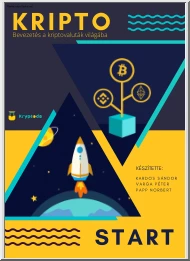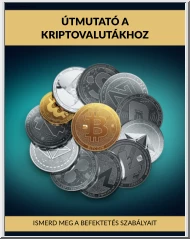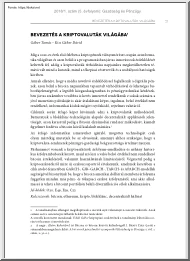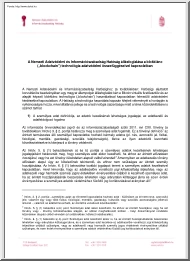Datasheet
Year, pagecount:2017, 12 page(s)
Language:English
Downloads:5
Uploaded:April 16, 2018
Size:1 MB
Institution:
-
Comments:
World Energy Council
Attachment:-
Download in PDF:Please log in!
Comments
No comments yet. You can be the first!
Content extract
Source: http://www.doksinet The Developing Role of Blockchain WHITE PAPER Executive Summary IN COLLABORATION WITH PricewaterhouseCoopers Source: http://www.doksinet ABOUT THIS WHITE PAPER White Papers are a new series of working papers developed by the World Energy Council. They facilitate strategic sharing of knowledge between the Council members and other energy stakeholders and policy shapers in a fast-paced era of disruptive change. This paper is developed by the Council in collaboration with PwC and with the support of our Future Energy Leaders, and does not reflect the opinion of the global Council’s network. The paper is informed by interviews with 15 companies and organisations that are actively involved in blockchain projects in the energy industry, based in the US, Europe, China, Japan and New Zealand. They are drawn from an expanding universe of projects across the energy sector and some from within the oil & gas industry. Our interviews include start-up
technology companies as well as energy incumbents and an energy regulator. We list the entities that participated below and we would like to take this opportunity to thank them for taking part. The findings from the interviews are combined with insight from the Council and PwC subject matter experts to provide a basis for ongoing discussion within the sector. If you would like to receive a full copy of this White Paper, or to explore further the role of blockchain and its potential impact on the energy system, please contact innovation@worldenergy.org Entities interviewed for this White Paper Filament German Energy Agency (DENA) Powerco Tokyo Electric Power Company Holdings, Inc. Electron Innogy innovation hub, Innogy Stromnetz Berlin Ofgem TenneT Statoil BLOC Energy Blockchain Labs Ponton China Cinda Securities LO3 Energy FinTech4good 1 Source: http://www.doksinet BLOCKCHAIN – TRANSFORMATIVE POTENTIAL In the latest World Energy Issues Map produced by the
Council, blockchain is identified as one of the most critical uncertainties within the digitalisation elements and is perceived by energy leaders globally to be an issue of both relatively high impact and uncertainty. Blockchain has the potential to change the way we arrange, record and verify transactions, with the underlying model shifting away from a centralised structure (exchanges, trading platforms, energy companies) towards decentralised systems (end customers, energy consumers interacting directly). It is no surprise then that, outside of the financial sector, the energy sector is seen as one of the industries where blockchain could have the biggest transformative and disruptive impact. But there are still a number of uncertainties in the way of blockchain which still could limit or even stall its growth due to a combination of technological, regulatory and other practical challenges. Among the big questions surrounding blockchain are: Will its early potential translate into
robust and reliable practical applications? How sure can we be that its promise of greater cybersecurity will be fulfilled and that it won’t introduce new, possibly bigger risks? Will industry-wide protocols and standards be needed before blockchain can become truly industry-wide and transformative rather than niche and fragmented? How far away is widespread deployment of blockchain in the energy sector? This White Paper is designed to start a dialogue on these questions and a number of other issues that are relevant to anyone concerned with the development of blockchain in the energy sector. It is a starting point for discussion of what might happen but doesn’t seek to define what should or will happen. Figure 1: World Energy Issues Monitor map (2018) 2 Source: http://www.doksinet SUMMARY OF KEY MESSAGES Energy is ahead of many other industries in adopting blockchain Blockchain is in an early stage of the innovation process but the energy industry is quite advanced compared to
other industries. Behind financial services, the sector is among the most advanced in its current adoption of blockchain. The senior executives that we interviewed as part of the preparation of this paper see considerable potential benefit from blockchain, not just for the greater efficiency of existing processes but to support and speed up the transformation of energy towards more decentralised business models. Expectations of disruption from blockchain are high All but one of the interviewees (93%) think that blockchain will be able to disrupt the functioning of the industry and contribute toward accelerating the speed of the changes taking place in the energy system such as decarbonisation and the move to more decentralised energy sources. And they are fairly bullish about the likely timescales with 87% anticipating that the most disruptive impact is less than five years away. Figure 2: Blockchain and key features at a glance How it works: Someone requests a transaction. The
transaction is complete. The requested transaction is broadcast to a P2P network consisting of computers, known as nodes. Validation The network of nodes Validates the transaction and the user’s status using known algorithms. The new block is then added to the existing blockchain, in a way that is permanent and unalterable. A verified transaction can involve cryptocurrency, contracts, records, or other information. Once verified, the transaction is combined with other transactions to create a new block of data for the ledger. Key features Mutual – blockchains are shared across organisations, owned equally by all and dominated by no-one; Distributed – blockchain is inherently multi-locational data structures and any user can keep his or her own copy, thus providing resilience and robustness; Ledger – blockchain is immutable, once a transaction is written it cannot be erased and, along with multiple copies, this means that the ledger’s integrity can easily be proven. 3
Source: http://www.doksinet New business models lie ahead as the technology potentially speeds up decentralisation and disintermediation Blockchain is expected to lead to much more direct relationships between energy producers and consumers, and to strengthen the market participation opportunities for small energy providers and prosumers. In a decentralised energy system, blockchain could enable energy supply contracts to be made directly between energy producers and energy consumers, and for them to be carried out automatically. Every single interviewee pointed to the disintermediation potential of blockchain as a strong benefit, opening up the way for business models that do not need a central intermediary. Grid management, energy trading and P2P applications emerge as the most relevant use case categories At this very early stage of development, the range of cases under investigation is very broad. The most promising applications for blockchain identified in our discussions with
senior executives are: architecture for managing grids, energy trading, peer to peer trading platforms, payment systems (particularly those associated with renewable energy and electric vehicle charging). Provenance use cases are also likely to emerge Other potentially significant deployments include the area of asset management and energy transportation. A strength of blockchain technology is its application in situations where the provenance of an asset and the data from it needs to be interrogated and updated by multiple parties. Such applications could range from liquefied natural gas cargoes all the way through to static assets such as smart meters. Figure 3. Several blockchain use cases along the energy value chain are currently investigated 4 Source: http://www.doksinet Figure 4. Overview over currently active companies, projects and initiatives B2C energy trading / Peer-to-peer systems Mobility Ponton TenneT Vandebron sonnen Conjoule Alliander AdptEve freeel.io
Lumenaza* WienEnergie BTL StromDAO Enerchain Europe Fortum Slock.it Share&Charge innogy Demos Vattenfall Slock.it Powerpeers* Ecochain USA Siemens TransActive Grid LO3 Energy Rest of world Car eWallet Powertree Arcade City PowerLedger Vector LedgerAssets La‘Zooz KEPCO Toyota The Sun Exchange *Interested model, currently currentlywithout withoutthe theuse useofofblockchain blockchain *Interested peer-to-peer model, *Not based on blockchain, but on distributed ledger *Not based on a Blockchain, but on a Distributed Ledger, which, byi its own account, overcomes the blockchain’s inefficency Active company utility PwC - BDEW Status: July 2017 Blockchain developer / Startup Sources: PwC Reseach, company Statements 5 Project/Initiative Source: http://www.doksinet Asset management Electron Further applications in the energy sector Further applications OneUp Lykke Stadtwerke Energie Verbund Lisk Guardtime Kleiner Racker ETHCORE GrünstromJeton
ChromaWay etherisc Stromhaltig.de Hyperledger InnoEnergy GridSingularity Ethereum IOTA* MultiChain Filament Smart Solar SolarChange ChainOfThings Volt Markets ElectriCChain Linq SolarCoin Wattcoin Labs NASDAQ EletraSeeD M-PAYG WanXiang EnergyBlockchain Lab Marubeni Bankymoon TEPCO Vodacom M-PESA Other company / organization Without guarantee of correctness & completeness 6 Source: http://www.doksinet Big uncertainties still lie in path of blockchain Significant obstacles remain in the way of blockchain, with regulation, technological uncertainty, energy consumption, cybersecurity and integration with existing systems highlighted as key issues. Blockchain will need to overcome these obstacles as well as prove that it can work in practice and overcome scale, speed and other constraints that currently hinder its applicability in many situations. Opinion divided on blockchain energy consumption Blockchain is potentially very energy-intensive, driven by very
complex validation algorithms (particularly those used by Bitcoin). However newer blockchain platforms (e.g Hyperledger) will operate at much lower energy costs The senior executives interviewed were divided on whether blockchain will contribute to net energy saving or whether it will add to energy demand; 47% said energy would be saved in net terms while 40% anticipate it will increase overall energy consumption. Blockchain remains early-stage and is not the only game in town Blockchain remains at a relatively early stage of development with most projects still at the pilot stage. Proof of concepts are only just being carried out and are still limited in scope. It still has significant limitations compared to existing technology in many situations, such as energy trading, and there is also the potential for rival technologies to emerge and leapfrog blockchain. Figure 5: Benefits and obstacles of blockchain application across the energy system* *The font size represents the
importance 7 Source: http://www.doksinet Regulatory concerns present an opportunity not an obstacle Regulatory concerns stood out as a significant obstacle in the view of two-thirds of the senior executives interviewed. But although blockchain presents regulatory challenges, there are also hopes that it could help meet regulatory goals. Blockchain has the potential to deliver greater transparency, improve access to information and simplify regulatory reporting. The regulator could have real-time access to data via blockchain Immutability of data is one of the key characteristics of blockchain technology and is also a strong plus for regulators and supervisory bodies. Cybersecurity remains a key uncertainty There is ambivalence about the cybersecurity impact of blockchain. Nearly as many expect it will introduce new risks as think it will strengthen security. And these views were not necessarily in opposite camps. A third of those who felt it would strengthen cybersecurity also
thought it would herald new cybersecurity risks in the future. Future direction - blockchain could become a table stake for future market success but doubts remain There is momentum gathering behind blockchain in the energy sector. It carries many implications for a wide range of stakeholders – consumers, businesses, regulators and policy-makers. Already, nearly half of those interviewed are deploying blockchain in real customer contexts. “We believe we need to mobilise people around this now and have the courage to build the capabilities for building decentral systems even though the technology is still quite new”. Dr. Carsten Stöcker, Senior Manager, Innogy innovation hub, Innogy “Speed is a current limitation but transactions will become faster as smarter developments get rolled out, that a few people are testing now”. Allison Clift-Jennings, CEO, Filament. 8 Source: http://www.doksinet LOOKING AHEAD The intention of this White Paper is to start a dialogue between
different stakeholders in the energy sector about the future for blockchain. The range of projects is indicative of the momentum that is already gathering behind blockchain within the energy sector. The variety of senior executive viewpoints given in response to a number of our survey questions shows that blockchain development is still subject to much debate. Many questions need further discussion. Among them: Promise versus uncertainty: Are you confident that the current uncertainties around blockchain will be overcome sufficiently for the technology to play a breakthrough role in the future of the sector? Accelerating energy transformation: Do the characteristics of blockchain fit with your organisation’s view of the future of energy, and could blockchain projects accelerate your part in that future? Business models and strategy: Will blockchain disrupt your organisation’s market and operating environment and, if so, how should you adjust your business strategy
and business models? Improving internal operations: Are there opportunities for blockchain technology to reduce cost or improve customer service? Purpose and suitability: Do you have a clear understanding of potential blockchain business applications and is blockchain the right technology? Resilience: How can you ensure the technology is resilient, scalable, secure and recoverable? Learning: Is the energy sector looking sufficiently at the more advanced development of blockchain in financial services and learning from that? Co-operation: Is there a need to step up cooperation with others in order to fully realise the benefits that blockchain can bring? Governance: How will it be governed and administered? Who will control identity, roles and rights? Regulation and industry networks: Are initiatives in place to ensure the regulatory framework evolves in an appropriate way around blockchain, and is dialogue taking place to develop industry-wide
critical mass around the use of the technology? We are interested in your views on these key questions about blockchain and the input you can provide. This initiative is part of a strategic sharing of knowledge between the Council members and other energy stakeholders and policy shapers in a fast-paced era of disruptive change. Your views and perspectives can provide an important contribution to future white papers and studies on this and other topics. 9 Source: http://www.doksinet WORLD ENERGY COUNCIL The World Energy Council is the principal impartial network of energy leaders and practitioners promoting an affordable, stable and environmentally sensitive energy system for the greatest benefit of all. Formed in 1923, the Council is the UN-accredited global energy body, representing the entire energy spectrum, with over 3,000 member organisations in over 90 countries, drawn from governments, private and state corporations, academia, NGOs and energy stakeholders. We inform global,
regional and national energy strategies by hosting high-level events including the World Energy Congress and publishing authoritative studies, and work through our extensive member network to facilitate the world’s energy policy dialogue. World Energy Council’s Flagship Publications World Energy Scenarios 2016 World Energy Trilemma 2016 World Energy Trilemma Index 2016 World Energy Resources 2016 World Energy Issues Monitor 2017 To receive a copy of the full paper or to provide any feedback or insights please contact us at innovation@worldenergy.org 10 Source: http://www.doksinet WORLD ENERGY COUNCIL 62–64 Cornhill London EC3V 3NH United Kingdom T (+44)20 7734 5996 F (+44)20 7734 5926 www.worldenergyorg | @WECouncil 11
technology companies as well as energy incumbents and an energy regulator. We list the entities that participated below and we would like to take this opportunity to thank them for taking part. The findings from the interviews are combined with insight from the Council and PwC subject matter experts to provide a basis for ongoing discussion within the sector. If you would like to receive a full copy of this White Paper, or to explore further the role of blockchain and its potential impact on the energy system, please contact innovation@worldenergy.org Entities interviewed for this White Paper Filament German Energy Agency (DENA) Powerco Tokyo Electric Power Company Holdings, Inc. Electron Innogy innovation hub, Innogy Stromnetz Berlin Ofgem TenneT Statoil BLOC Energy Blockchain Labs Ponton China Cinda Securities LO3 Energy FinTech4good 1 Source: http://www.doksinet BLOCKCHAIN – TRANSFORMATIVE POTENTIAL In the latest World Energy Issues Map produced by the
Council, blockchain is identified as one of the most critical uncertainties within the digitalisation elements and is perceived by energy leaders globally to be an issue of both relatively high impact and uncertainty. Blockchain has the potential to change the way we arrange, record and verify transactions, with the underlying model shifting away from a centralised structure (exchanges, trading platforms, energy companies) towards decentralised systems (end customers, energy consumers interacting directly). It is no surprise then that, outside of the financial sector, the energy sector is seen as one of the industries where blockchain could have the biggest transformative and disruptive impact. But there are still a number of uncertainties in the way of blockchain which still could limit or even stall its growth due to a combination of technological, regulatory and other practical challenges. Among the big questions surrounding blockchain are: Will its early potential translate into
robust and reliable practical applications? How sure can we be that its promise of greater cybersecurity will be fulfilled and that it won’t introduce new, possibly bigger risks? Will industry-wide protocols and standards be needed before blockchain can become truly industry-wide and transformative rather than niche and fragmented? How far away is widespread deployment of blockchain in the energy sector? This White Paper is designed to start a dialogue on these questions and a number of other issues that are relevant to anyone concerned with the development of blockchain in the energy sector. It is a starting point for discussion of what might happen but doesn’t seek to define what should or will happen. Figure 1: World Energy Issues Monitor map (2018) 2 Source: http://www.doksinet SUMMARY OF KEY MESSAGES Energy is ahead of many other industries in adopting blockchain Blockchain is in an early stage of the innovation process but the energy industry is quite advanced compared to
other industries. Behind financial services, the sector is among the most advanced in its current adoption of blockchain. The senior executives that we interviewed as part of the preparation of this paper see considerable potential benefit from blockchain, not just for the greater efficiency of existing processes but to support and speed up the transformation of energy towards more decentralised business models. Expectations of disruption from blockchain are high All but one of the interviewees (93%) think that blockchain will be able to disrupt the functioning of the industry and contribute toward accelerating the speed of the changes taking place in the energy system such as decarbonisation and the move to more decentralised energy sources. And they are fairly bullish about the likely timescales with 87% anticipating that the most disruptive impact is less than five years away. Figure 2: Blockchain and key features at a glance How it works: Someone requests a transaction. The
transaction is complete. The requested transaction is broadcast to a P2P network consisting of computers, known as nodes. Validation The network of nodes Validates the transaction and the user’s status using known algorithms. The new block is then added to the existing blockchain, in a way that is permanent and unalterable. A verified transaction can involve cryptocurrency, contracts, records, or other information. Once verified, the transaction is combined with other transactions to create a new block of data for the ledger. Key features Mutual – blockchains are shared across organisations, owned equally by all and dominated by no-one; Distributed – blockchain is inherently multi-locational data structures and any user can keep his or her own copy, thus providing resilience and robustness; Ledger – blockchain is immutable, once a transaction is written it cannot be erased and, along with multiple copies, this means that the ledger’s integrity can easily be proven. 3
Source: http://www.doksinet New business models lie ahead as the technology potentially speeds up decentralisation and disintermediation Blockchain is expected to lead to much more direct relationships between energy producers and consumers, and to strengthen the market participation opportunities for small energy providers and prosumers. In a decentralised energy system, blockchain could enable energy supply contracts to be made directly between energy producers and energy consumers, and for them to be carried out automatically. Every single interviewee pointed to the disintermediation potential of blockchain as a strong benefit, opening up the way for business models that do not need a central intermediary. Grid management, energy trading and P2P applications emerge as the most relevant use case categories At this very early stage of development, the range of cases under investigation is very broad. The most promising applications for blockchain identified in our discussions with
senior executives are: architecture for managing grids, energy trading, peer to peer trading platforms, payment systems (particularly those associated with renewable energy and electric vehicle charging). Provenance use cases are also likely to emerge Other potentially significant deployments include the area of asset management and energy transportation. A strength of blockchain technology is its application in situations where the provenance of an asset and the data from it needs to be interrogated and updated by multiple parties. Such applications could range from liquefied natural gas cargoes all the way through to static assets such as smart meters. Figure 3. Several blockchain use cases along the energy value chain are currently investigated 4 Source: http://www.doksinet Figure 4. Overview over currently active companies, projects and initiatives B2C energy trading / Peer-to-peer systems Mobility Ponton TenneT Vandebron sonnen Conjoule Alliander AdptEve freeel.io
Lumenaza* WienEnergie BTL StromDAO Enerchain Europe Fortum Slock.it Share&Charge innogy Demos Vattenfall Slock.it Powerpeers* Ecochain USA Siemens TransActive Grid LO3 Energy Rest of world Car eWallet Powertree Arcade City PowerLedger Vector LedgerAssets La‘Zooz KEPCO Toyota The Sun Exchange *Interested model, currently currentlywithout withoutthe theuse useofofblockchain blockchain *Interested peer-to-peer model, *Not based on blockchain, but on distributed ledger *Not based on a Blockchain, but on a Distributed Ledger, which, byi its own account, overcomes the blockchain’s inefficency Active company utility PwC - BDEW Status: July 2017 Blockchain developer / Startup Sources: PwC Reseach, company Statements 5 Project/Initiative Source: http://www.doksinet Asset management Electron Further applications in the energy sector Further applications OneUp Lykke Stadtwerke Energie Verbund Lisk Guardtime Kleiner Racker ETHCORE GrünstromJeton
ChromaWay etherisc Stromhaltig.de Hyperledger InnoEnergy GridSingularity Ethereum IOTA* MultiChain Filament Smart Solar SolarChange ChainOfThings Volt Markets ElectriCChain Linq SolarCoin Wattcoin Labs NASDAQ EletraSeeD M-PAYG WanXiang EnergyBlockchain Lab Marubeni Bankymoon TEPCO Vodacom M-PESA Other company / organization Without guarantee of correctness & completeness 6 Source: http://www.doksinet Big uncertainties still lie in path of blockchain Significant obstacles remain in the way of blockchain, with regulation, technological uncertainty, energy consumption, cybersecurity and integration with existing systems highlighted as key issues. Blockchain will need to overcome these obstacles as well as prove that it can work in practice and overcome scale, speed and other constraints that currently hinder its applicability in many situations. Opinion divided on blockchain energy consumption Blockchain is potentially very energy-intensive, driven by very
complex validation algorithms (particularly those used by Bitcoin). However newer blockchain platforms (e.g Hyperledger) will operate at much lower energy costs The senior executives interviewed were divided on whether blockchain will contribute to net energy saving or whether it will add to energy demand; 47% said energy would be saved in net terms while 40% anticipate it will increase overall energy consumption. Blockchain remains early-stage and is not the only game in town Blockchain remains at a relatively early stage of development with most projects still at the pilot stage. Proof of concepts are only just being carried out and are still limited in scope. It still has significant limitations compared to existing technology in many situations, such as energy trading, and there is also the potential for rival technologies to emerge and leapfrog blockchain. Figure 5: Benefits and obstacles of blockchain application across the energy system* *The font size represents the
importance 7 Source: http://www.doksinet Regulatory concerns present an opportunity not an obstacle Regulatory concerns stood out as a significant obstacle in the view of two-thirds of the senior executives interviewed. But although blockchain presents regulatory challenges, there are also hopes that it could help meet regulatory goals. Blockchain has the potential to deliver greater transparency, improve access to information and simplify regulatory reporting. The regulator could have real-time access to data via blockchain Immutability of data is one of the key characteristics of blockchain technology and is also a strong plus for regulators and supervisory bodies. Cybersecurity remains a key uncertainty There is ambivalence about the cybersecurity impact of blockchain. Nearly as many expect it will introduce new risks as think it will strengthen security. And these views were not necessarily in opposite camps. A third of those who felt it would strengthen cybersecurity also
thought it would herald new cybersecurity risks in the future. Future direction - blockchain could become a table stake for future market success but doubts remain There is momentum gathering behind blockchain in the energy sector. It carries many implications for a wide range of stakeholders – consumers, businesses, regulators and policy-makers. Already, nearly half of those interviewed are deploying blockchain in real customer contexts. “We believe we need to mobilise people around this now and have the courage to build the capabilities for building decentral systems even though the technology is still quite new”. Dr. Carsten Stöcker, Senior Manager, Innogy innovation hub, Innogy “Speed is a current limitation but transactions will become faster as smarter developments get rolled out, that a few people are testing now”. Allison Clift-Jennings, CEO, Filament. 8 Source: http://www.doksinet LOOKING AHEAD The intention of this White Paper is to start a dialogue between
different stakeholders in the energy sector about the future for blockchain. The range of projects is indicative of the momentum that is already gathering behind blockchain within the energy sector. The variety of senior executive viewpoints given in response to a number of our survey questions shows that blockchain development is still subject to much debate. Many questions need further discussion. Among them: Promise versus uncertainty: Are you confident that the current uncertainties around blockchain will be overcome sufficiently for the technology to play a breakthrough role in the future of the sector? Accelerating energy transformation: Do the characteristics of blockchain fit with your organisation’s view of the future of energy, and could blockchain projects accelerate your part in that future? Business models and strategy: Will blockchain disrupt your organisation’s market and operating environment and, if so, how should you adjust your business strategy
and business models? Improving internal operations: Are there opportunities for blockchain technology to reduce cost or improve customer service? Purpose and suitability: Do you have a clear understanding of potential blockchain business applications and is blockchain the right technology? Resilience: How can you ensure the technology is resilient, scalable, secure and recoverable? Learning: Is the energy sector looking sufficiently at the more advanced development of blockchain in financial services and learning from that? Co-operation: Is there a need to step up cooperation with others in order to fully realise the benefits that blockchain can bring? Governance: How will it be governed and administered? Who will control identity, roles and rights? Regulation and industry networks: Are initiatives in place to ensure the regulatory framework evolves in an appropriate way around blockchain, and is dialogue taking place to develop industry-wide
critical mass around the use of the technology? We are interested in your views on these key questions about blockchain and the input you can provide. This initiative is part of a strategic sharing of knowledge between the Council members and other energy stakeholders and policy shapers in a fast-paced era of disruptive change. Your views and perspectives can provide an important contribution to future white papers and studies on this and other topics. 9 Source: http://www.doksinet WORLD ENERGY COUNCIL The World Energy Council is the principal impartial network of energy leaders and practitioners promoting an affordable, stable and environmentally sensitive energy system for the greatest benefit of all. Formed in 1923, the Council is the UN-accredited global energy body, representing the entire energy spectrum, with over 3,000 member organisations in over 90 countries, drawn from governments, private and state corporations, academia, NGOs and energy stakeholders. We inform global,
regional and national energy strategies by hosting high-level events including the World Energy Congress and publishing authoritative studies, and work through our extensive member network to facilitate the world’s energy policy dialogue. World Energy Council’s Flagship Publications World Energy Scenarios 2016 World Energy Trilemma 2016 World Energy Trilemma Index 2016 World Energy Resources 2016 World Energy Issues Monitor 2017 To receive a copy of the full paper or to provide any feedback or insights please contact us at innovation@worldenergy.org 10 Source: http://www.doksinet WORLD ENERGY COUNCIL 62–64 Cornhill London EC3V 3NH United Kingdom T (+44)20 7734 5996 F (+44)20 7734 5926 www.worldenergyorg | @WECouncil 11
